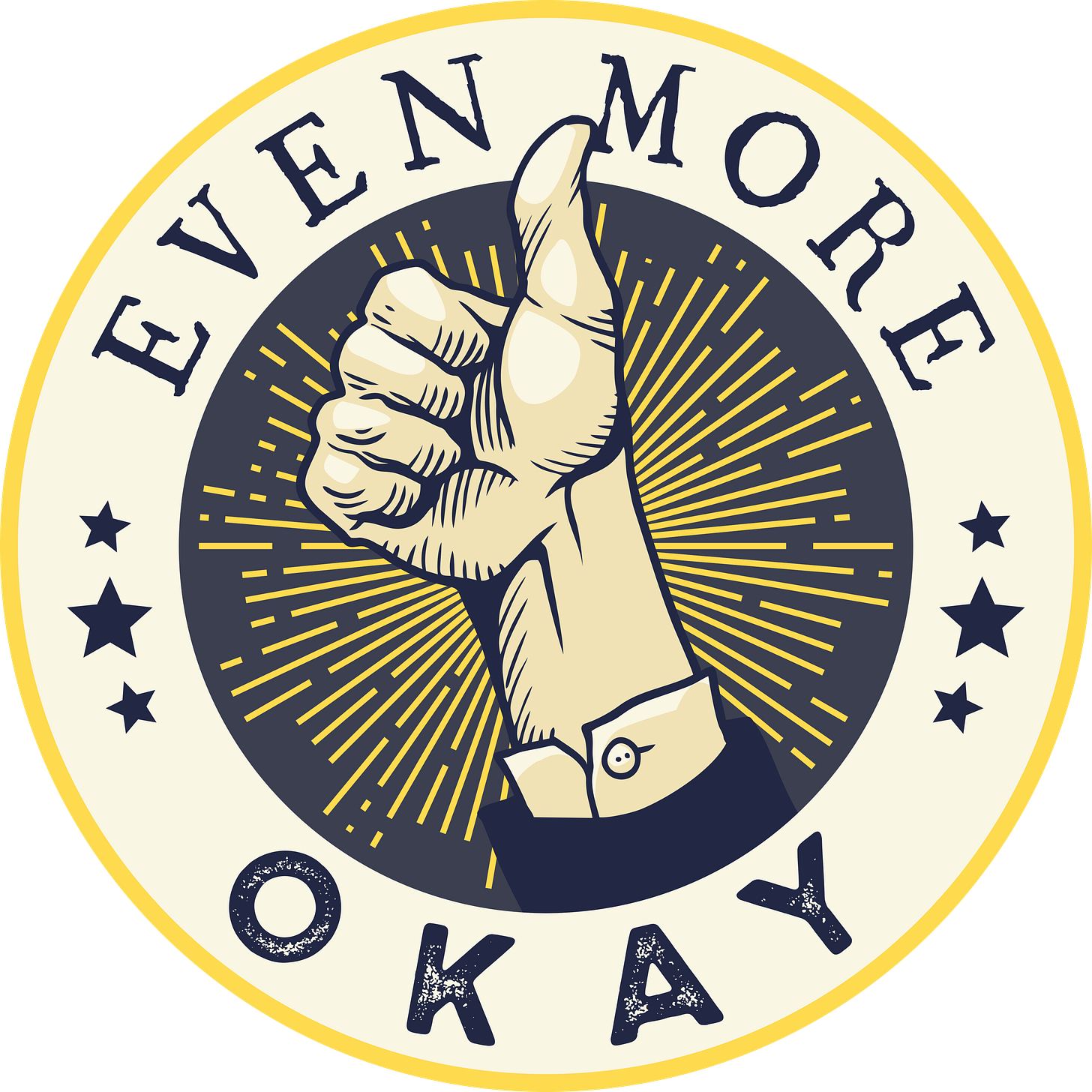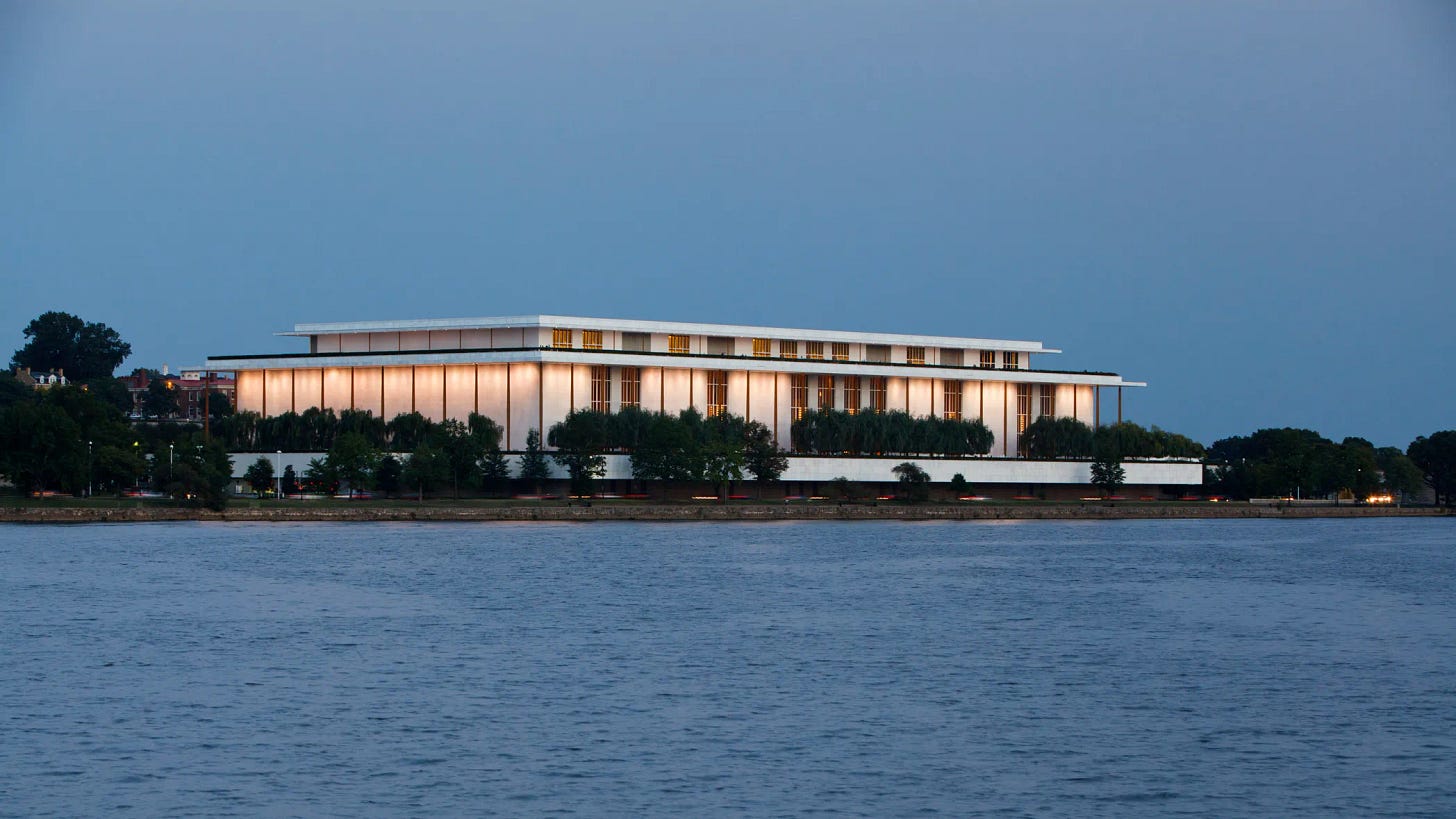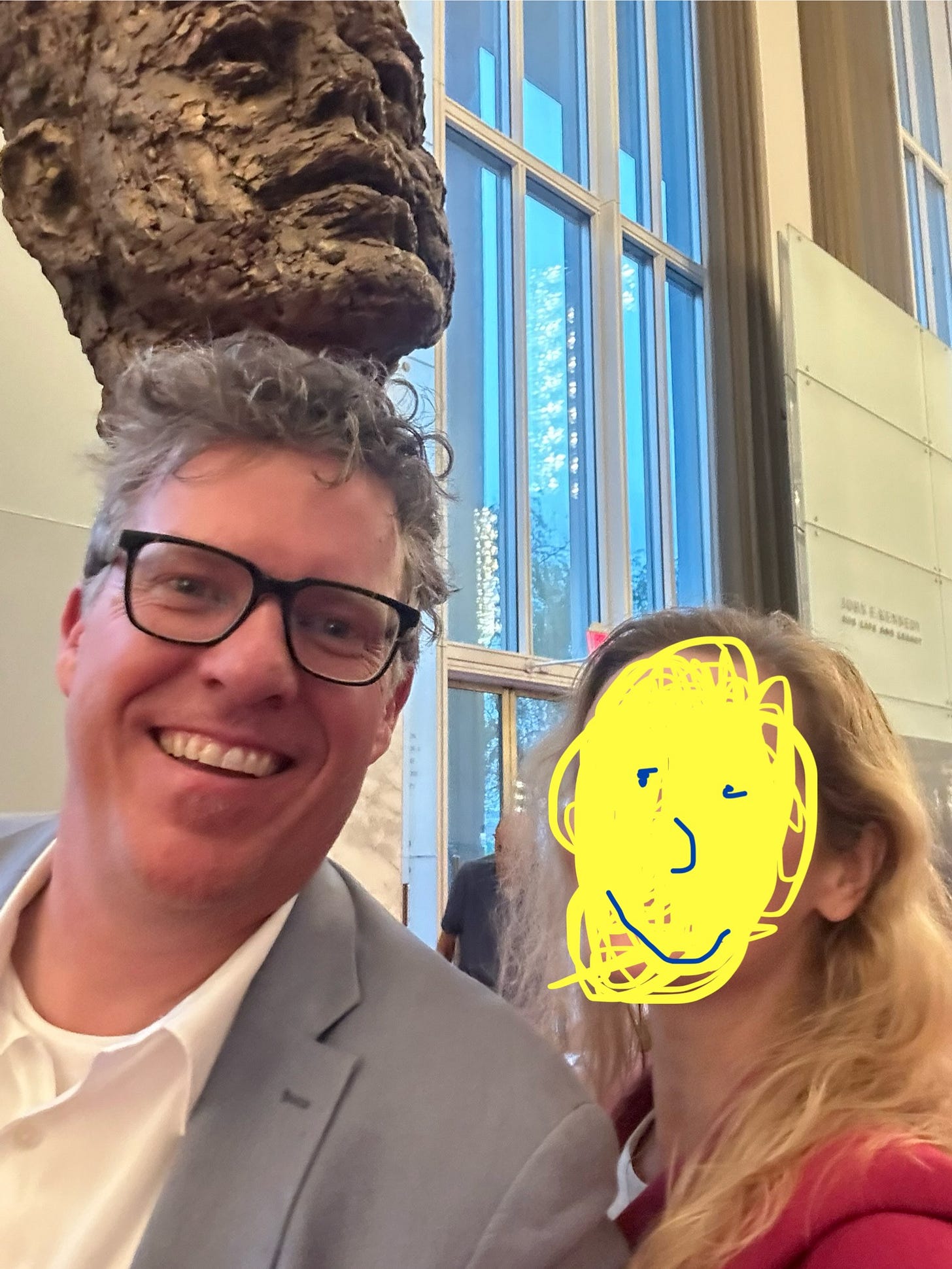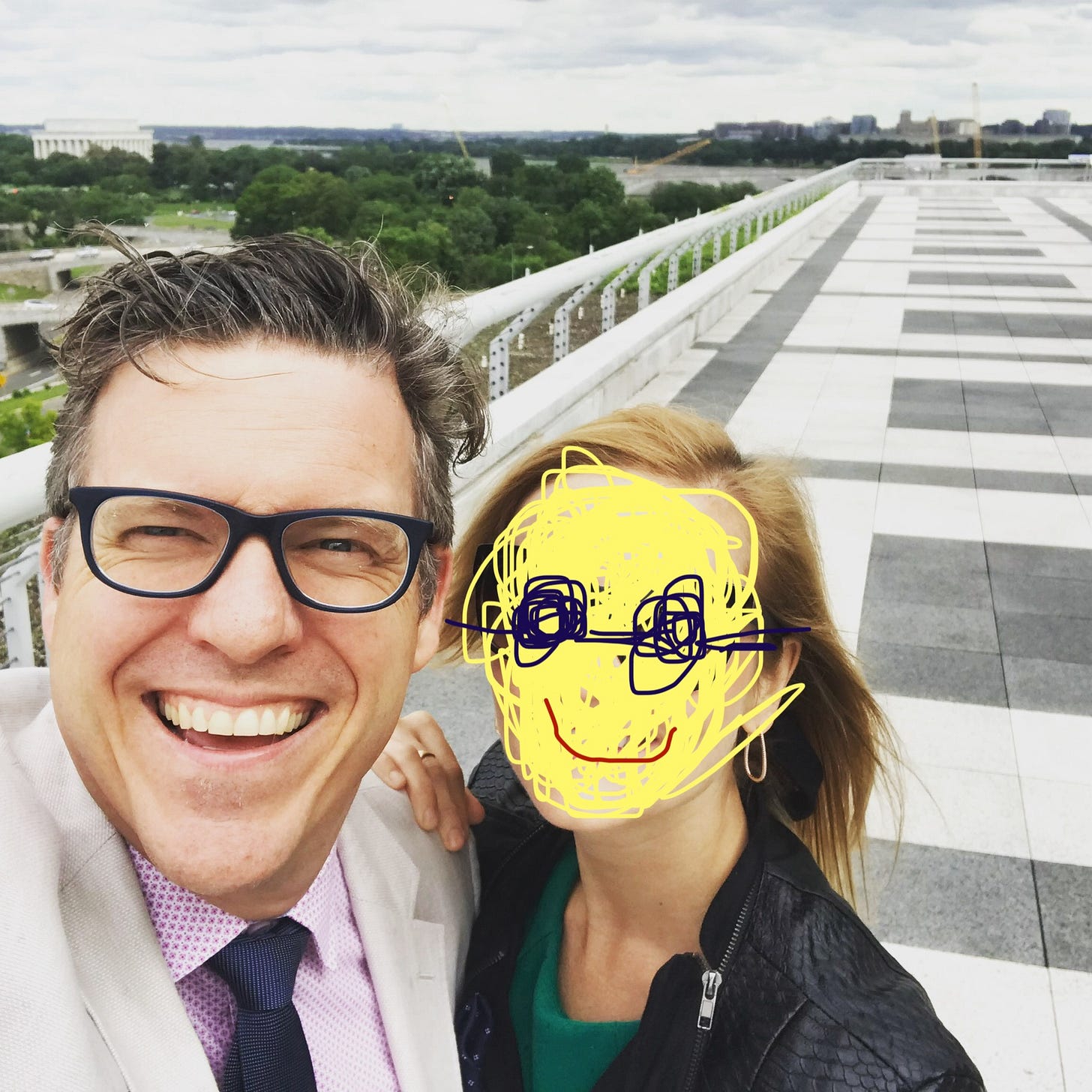Honor
Trump is determined to ruin a special place.
Art is political in the most profound sense, not as a weapon in the struggle, but as an instrument of understanding of the futility of struggle between those who share man’s faith.
– President John F. Kennedy
The Plan
When I arrived in Washington, DC, on May 19, 1998, I decided to take an extended break after the exhausting four years of college. I was determined to arrive in my new city and do nothing.
Despite being twenty-two years old, I felt like an old man. If you were as popular as I was in college, you’d remember how tiring “being awesome” all the time is. The second half of my senior year was particularly fatiguing. I took the minimum number of classes to be considered a full-time student, and I prioritized partying, slacking off, and dating as much as I could before adult life kicked in. I had put in the training, but like any high-performance athlete, I needed a lengthy recovery period.
Washington, DC, was not new to me. I had visited there the previous year with my parents and the year before that on a college trip with some friends. While those trips took place in the heart of DC, my permanent home would be in the Maryland suburbs. I would live with my older brother, who graduated two years before me and was a commissioned Army officer at Walter Reed Medical Center.
Over the next few weeks, I settled into my new daily routine of being a complete leech on my brother’s goodwill. But that is part of being the youngest. I didn’t create these rules. To avoid being a total jerk to my brother, I did look into employment. Since I attended school on a partial acting scholarship, I still held onto delusions of becoming some kind of actor/director hybrid. Nothing proves you know what you’re doing more than moving to the most political city in the world to make that happen. I think I auditioned for something once, so I checked off that box.
After a few months, my brother had the nerve to announce my vacation was over and ask me to begin paying rent and contributing like a normal human being. Fortunately, I had a plan.
In my defense, during that second half of senior year, while partying, slacking off, and dating, I did think about what I would do after I decided to move to Washington. My immediate thought was working at the John F. Kennedy Center for the Performing Arts, where I could become a kick-ass arts administrator if my acting and directing career didn’t take off.
The plan was now set. And because I’m smart, I also had a backup plan.
· Plan A was to get a job at the Kennedy Center.
· Plan B was to figure out the new Plan A if I didn’t.
Home
The John F. Kennedy Center for the Performing Arts is the national cultural center of the United States and a living memorial to the 35th and 13th OKH-ranked president. Congress established it in 1958 through the passage of the National Cultural Center Act, which President Dwight D. Eisenhower, Kennedy’s predecessor, signed into law.
In 1964, President Lyndon Johnson broke ground on land next to the Watergate Building in Foggy Bottom along the Potomac River. The construction cost around $70 million, with the federal government chipping in $43 million. The rest came from private funding and foreign countries, such as the marble from Italy used throughout the building. The first performance took place in 1971, featuring the premiere of Leonard Bernstein’s Mass, a musical theatre piece commissioned by former First Lady, Jackie Kennedy, inspired by the funeral of her brother-in-law, Robert Kennedy.
It would not surprise you that it was panned.
The Kennedy Center has two long halls that separate three performance spaces in the main building. The Hall of States features flags of every US state, district, and territory. The Hall of Nations is on the other side, with flags of every nation with which the United States has diplomatic relations. As a flag enthusiast, the Kennedy Center is really cool.
Another long hallway connects the Eisenhower Theater, the Opera House, and the Concert Hall, opening out to the Potomac River. In the middle of this football-field-length walkway is a JFK bust. Created by Robert Berks, Kennedy’s face is divided in half: one side shows how he looked on the day of his inauguration, and the other shows how much he aged during the two years he was in office. When the doors of the Opera House are open, you can see him from the stage.
The Kennedy Center's premier event is the Kennedy Center Honors. This annual occasion recognizes those in the performing arts who have made significant contributions to American culture during their careers. Established in 1978, it is an invitation-only, weekend-long celebration that takes Honorees and guests all over town to attend events like lunch at the White House, award ceremonies at the State Department, and ultimately, on Sunday evening, a celebration of performing arts excellence. Over nearly 50 years, 255 individuals have received the Kennedy Center Honors.
Finally, well rested, I applied for an internship in the Press Office. Because I’m so smart, the writing sample I drafted was a press release announcing that the Kennedy Center had hired me as a Press Office intern due to my impressive background of partying, slacking off, and dating. By an absolute miracle, they agreed to let me work there.
Plan A was successful, and the Kennedy Center would be a second home in many ways for the next 15 years.
Growing Up
When you have a home, it usually comes with the family, and the Press Office was no different. It was a six-person team, along with four interns. Tiki was the Boss. Paul, Patch, Mary, and Patty were the lead public relations people, and Kelly (her last name) was the office assistant.
The other interns were three women: Sarah, Eileen, and someone who was terrible at her job, so I have forgotten her name.
Working as a press intern at the Kennedy Center was one of the best experiences of my life. I call it my first job, because technically I was paid, and I learned so much about myself and, more importantly, how you treat others.
My primary assignment was to get profiles of every intern in the class into their local paper while I helped on low-priority stories involving the Center. Each intern had a specific area—Eileen was tasked with the National Symphony Orchestra because she studied music. Sarah worked with Education because she wanted to be a teacher. Whatsherface was assigned to Mary, and I can’t remember what Mary was in charge of, but that young woman was terrible, so whatever.
I was assigned to Paul with a focus on theater, dance, and an area called “performing arts for everyone,” which included an initiative called the Millennium Stage, because everything was called Millennium back in 1999.
Paul was a great Boss. Tiki enjoyed my humor and how little I understood about most topics related to Broadway, Dance, symphonic music, and everything related to the world outside of United States presidents and the Civil War. Kelly, Patch, Patty, and Mary were brilliant and kind.
Despite not knowing what I was doing, I succeeded with my task. I landed quite a few stories about my fellow interns from all over the country, which taught me the gift of being concise and how easy it is to pick up the phone and talk to someone.
One low-priority assignment turned in a proud moment was when I landed a story in a local newspaper about the Kennedy Center's decision to live-stream performances on the Millennium Stage, a technology in 1999/2000 that few had heard of.
Of course, the local paper in Washington, DC, is The Washington Post. I pitched to an assistant, who obviously could tell I was a recent college graduate who had recovered from partying, acting, and dating. She forwarded it to her boss, the head writer of technology in the Business Section.
With Paul's help, we worked with the program manager to explain the details because no one could really explain what live streaming was. Eventually, the story landed on the front page of the Business Section—a first for the Center. At the time, the president of the Kennedy Center was a guy named Larry, who looked like your uncle. He was ecstatic at our accomplishment. He asked who made this happen, and Tiki proudly proclaimed, “Our Idiot Intern, Christopher.”
Seriously, they explained that an intern did it, and for the rest of my tenure there, they expressed regret for doing so since they had a difficult time ever getting anything on the front page of any section in the Post, and the president kept harping that the intern could do it. It didn’t matter; they were proud of me, which made them want to help me more.
The internship lasted a year, and then I received an extension because I was very good at the job and willing to lift heavy things.
Time After Time
I could write a 5,000-word essay about that first year alone, but I want to share a bigger story beyond that.
I left the Kennedy Center in the middle of 2000 and took another job to work for a Trade Association. When it went under and I was out of a job, the Kennedy Center took me back, this time, to the Marketing Department, which worked in the same intimate second-floor space as the press office. By 2002, I moved up to the Development (fundraising) office to work with the Vice President of Development, a woman named Marie who would become an even more important person in my life. By 2004, I left to take a job in Baltimore, and my fundraising career began in earnest. Ten years later, I returned to help Marie and my Development friends with their capital campaign. I finally left the Kennedy Center in February 2015.
Here's a small sampling of everything that happened to me:
Tiki made Paul buy me a suit so I could interview.
Paul sent me to the New York Times – my second ever flight.
In 2001, my mother suffered a massive heart attack. My coworkers on the floor pooled cash and sent me home within an hour.
When 9/11 happened, I was the Fire Marshall for the floor.
I got engaged to someone I worked with at the Kennedy Center.
I got unengaged to someone I used to work with at the Kennedy Center.
I coached the softball team and led them back to the playoffs.
I had hilarious interactions with billionaires, actors and actresses, singers, comedians, and a Supreme Court Justice.
I walked by Chandra Levy’s place every day for four years.
I lived through the DC Sniper.
I worked at a bar as a second job, hosting the weekly pub quiz.
While my career has had a few ups and downs, nothing compares to my time when I made so many friends in so many departments, did various jobs, and made practically no money.
I now work in Georgetown, just up that Potomac River from home. When I drive, I cross the Memorial Bridge and head towards the Lincoln Memorial. Arlington National Cemetery is just behind you, and the Kennedy Center is just off to your left. I always make it a point to see it and say hi - a happy reminder of my time as an idiot intern who turned into a fundraiser and all the friends I made along the way.
Trumped
Since Donald Trump returned to the White House, he has made cruelty into policy. In February, fired members of the board of trustees and named himself chairman. He also sacked the president, and even my friend Eileen, who went on to a successful career in PR and returned to the Kennedy Center for Tiki’s job. This past week, Trump announced the 2025 Kennedy Center Honorees and named himself the host, along with a preview of giving himself the award during America's 250th birthday.
During his first term, he stayed away because honorees threatened to boycott if he showed up. Now, he’s back to settle scores and burn the place down – just to own the libs.
Just another day in Trump’s fascist America.
I look forward to the day when Honor returns to the marble box on the Potomac, and Anonymous and I can go there and celebrate this special place.







Chris, I especially liked and related to this one. I love the Kennedy Center and hate what it's had to endure since the last presidential election. I staunchly admire and support the performers who continue to boycott performances to protest the changes in solidarity. I remain hopeful that the next president will have much less ego and much more sense, and that "things" get back to normal.
I had never heard that you worked there for years, and it sounds like a really wonderful experience. I usually watch the KCH broadcast every year, but I'll skip this year so as to keep my blood pressure under control.
Chris, the Kennedy Center was built on the land that previously was home to the Christian Heurich brewery. They produced a popular beer called Senate lager. Back in the day, the minimum drinking age in DC for beer and wine was 18 years old. This wasn’t changed until 1984. Having been weaned on beer in DC, I made the mistake of carrying beer in a paper sack in Philadelphia during my first week in college. PA did not have enlightened liquor laws, and does not until this day. This mistake got me thrown in jail for one night in the City of Brotherly Love. Looking back on the experience, it makes more sense to keep the drinking age at 21, and turn the Kennedy Center back into a brewery.